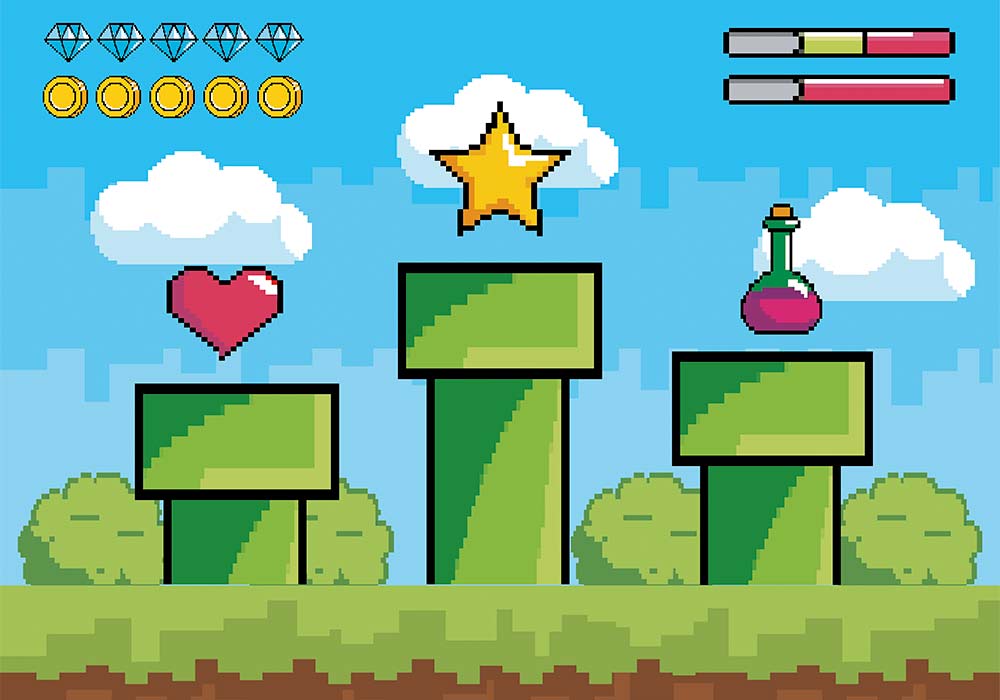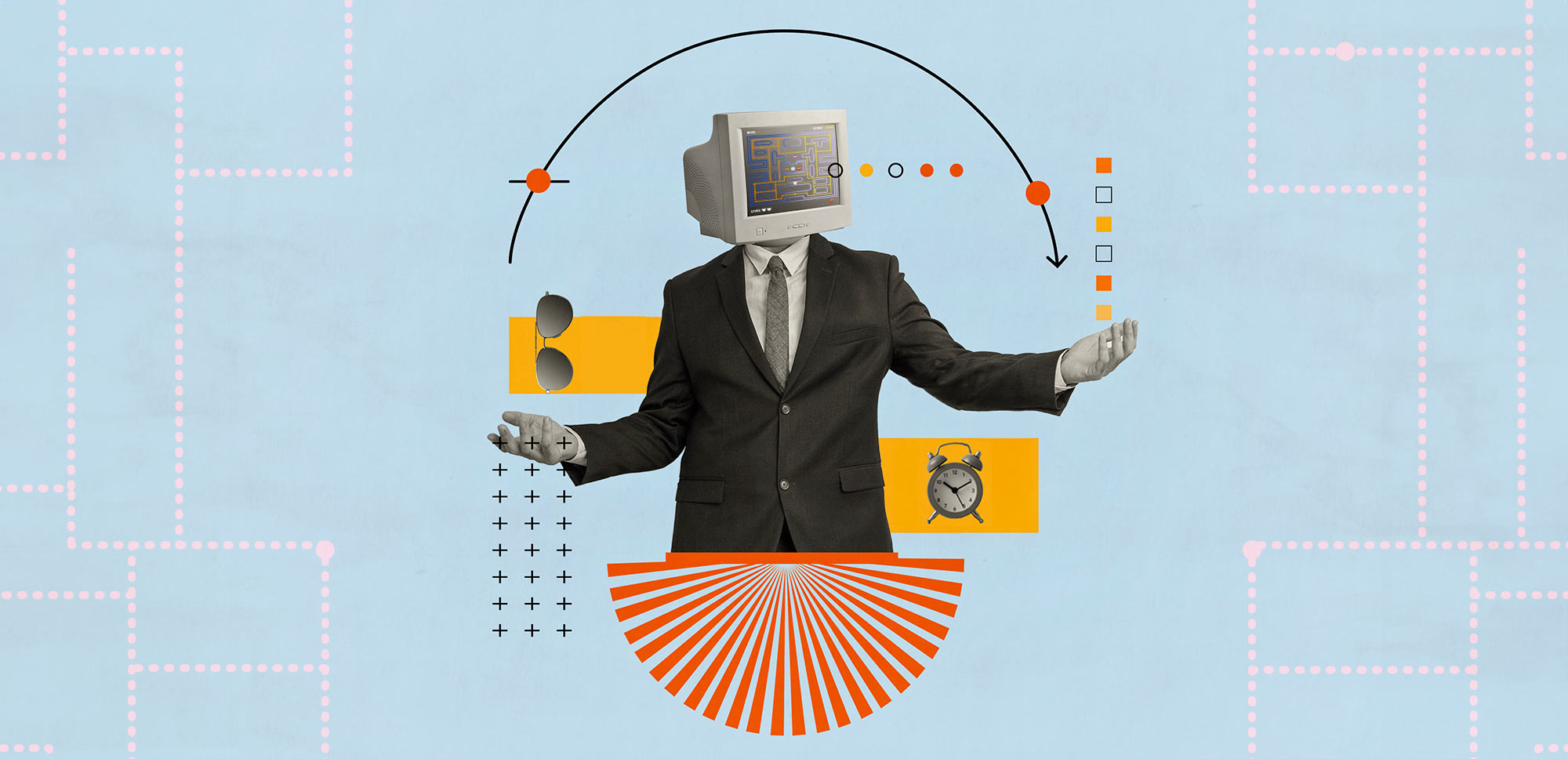Playing games can also be for serious, professional adults. In today’s fast-paced corporate world, where work pressure and stress are omnipresent, gamification emerges as a fun and stimulating solution. This approach turns routine work tasks into stimulating, playful and motivating challenges, transforming work into a game.
In this article, we’ll examine examples of gamification that have successfully turned work into an engaging challenge, while improving productivity, fostering collaboration and increasing job satisfaction.
What will I read about in this article?
The idea of playfulness and a new perspective on motivation and performance
Play is a fundamental element in all cultures. During early childhood, it serves as a constant and vital source of learning and development. Its relevance persists into adult life as well, especially through sport, which represents a formal, structured and competitive version of play.
The Dutch historian and philosopher Johan Huizinga (1872-1945) argued in his book Homo Ludens (1938), translated “The Man Who Plays”, that play hasn’t simply been a playful activity throughout history, but a primary activity through which people have interacted with the world. Even hunting in ancient times could be considered a game.
Play is always voluntary, and emerges under rules agreed upon by all those who play. The very act of playing also involves enthusiasm and emotion.

One gives oneself to the game. That’s why we like it. It’s a magical and closed circle where we take refuge from everything outside for a few moments. It’s a real break from reality.
Work and play have traditionally been perceived as mutually exclusive, at least until recently: business versus leisure. Recently, however, playful elements have begun to be applied to work and other areas. This is known as gamification.
Gamification is defined as the application of typical game elements such as scoring and competition to non-game contexts to increase participation, engagement and performance.
It’s essentially based on two elements:
- Extrinsic motivation (achieving goals, small or large)
- Technology (monitoring the evolution of these objectives).
Typically, the steps to generate good examples of gamification include precisely defining the problem or challenge, establishing scoring schemes and associated rewards, and employing elements such as avatars, colours, profiles and team division. Other words associated with gamification are milestones, goals, levels and badges.
“Gamification is defined as the application of typical game elements such as scoring and competition to non-game contexts”.
According to experts, the success of gamification lies in dopamine, a neurotransmitter that activates a rewarding brain mechanism every time we achieve a challenge, goal or milestone. The simple checkmark (√) that we can use in our notebook when we finish a task generates the same feeling.
Many organisations have successfully applied gamification. The Spanish Society of Cardiology (SEC) has been running the Clinical Cases League for years, a competition where teams fight to solve the most clinical cases possible.
“The success of gamification lies in dopamine, a neurotransmitter that activates a rewarding brain mechanism every time we achieve a challenge, goal or milestone.
Gamification: game or competition?
Although gamification facilitates increased participant interest, improves their willingness and can reduce their stress, it has also received some criticism:
- Gamification can lead to superficiality and lack of authenticity on the part of participants.
- It may come to be seen as a possible behavioural manipulation.
- It does not have to suit all audiences or be appreciated by all employees.
Critics argue that instead of gamification we should talk about “pointsification”, since this approach focuses on assigning points to motivate and reward the participant, using the game for other purposes beyond its nature.
Examples of gamification through playful work design
In the face of this criticism, a new perspective has emerged: playful work design. Unlike gamification, which directly applies game mechanics such as points, leaderboards and rewards to increase motivation, playful work design is based on a more holistic view.
It seeks to foster a playful culture within the workplace, facilitating a positive and pleasant environment, so that employees feel free to experiment, take risks, test. While gamification emphasises extrinsic motivation, playful work design emphasises intrinsic motivation, which we mentioned in this article. The research team that conceptualised playful work design built on previous research that emphasised the importance of empowering employees to design their work, i.e. providing autonomy to organise and manage the tasks assigned to them.

In this way, the aim is to encourage the enjoyment of work (play as fun), and the challenge (play as competition) without changing the nature of the work.
“The aim is to encourage the enjoyment of work (play as fun), and the challenge (play as a competition) without changing the nature of the work”.
Along these lines, the authors responsible for the new concept developed and validated a scale that allows organisations to understand the ability of their employees to playfully design their work, distinguishing between items that measure fun (e.g. “I approach my tasks creatively to make them more interesting”), and competition (e.g. “I compete with myself at work, not because I have to, but because I enjoy it”).
The experts realised that in all professions there’s room for applying both perspectives through individual gamification examples. For example, they observed how a bus driver set out to count and reduce the number of decelerations on his daily commute to facilitate smoother journeys for his customers, a flight attendant decided to use humour in his flights or a programmer programmed as if he had to solve a riddle.
This playful approach to work was found especially among employees who were more curious, open-minded and had a sense of humour. At the same time, having this playfulness, the ability to transform any situation – such as a routine work task – into something playful, was shown to be related to higher employee engagement and performance. There are still many unanswered questions, yet it seems a worthy prospect to consider. Among other things, it would be positive for organisations to:
- Assess and measure playfulness: so that organisations know the degree of playfulness of their employees, and its direct relationship to increased engagement and performance.
- Facilitate an environment that allows for playfulness: organisations must understand that this approach is always a self-initiative on the part of employees; it cannot be forced, but it can be facilitated in an environment that’s more conducive to this approach, promoting spaces of trust, autonomy and well-being.
In conclusion, gamification is redefining work dynamics by merging playful elements with everyday tasks. The examples of gamification we have explored in this article demonstrate how this approach can transform the work environment, foster collaboration, improve productivity and increase job satisfaction. Without a doubt, gamification, and even more so, gamified design, is an innovative strategy that has the potential to make work a game, turning every challenge into an opportunity for growth and fun.
Sources:
- Scharp, Y. S., Bakker, A. B., Breevaart, K., Kruup, K., & Uusberg, A. (2023). Playful work design: Conceptualization, measurement, and validity. Human Relations, 76(4), 509-550. https://doi.org/10.1177/00187267211070996
- Parker, S. K. (2014). Beyond motivation: Job and work design for development, health, ambidexterity, and more. Annual review of psychology, 65, 661-691.
- https://people.acciona.com/es/cultura-organizacional/felicidad-trabajo-clave-motivacion-profesional/


